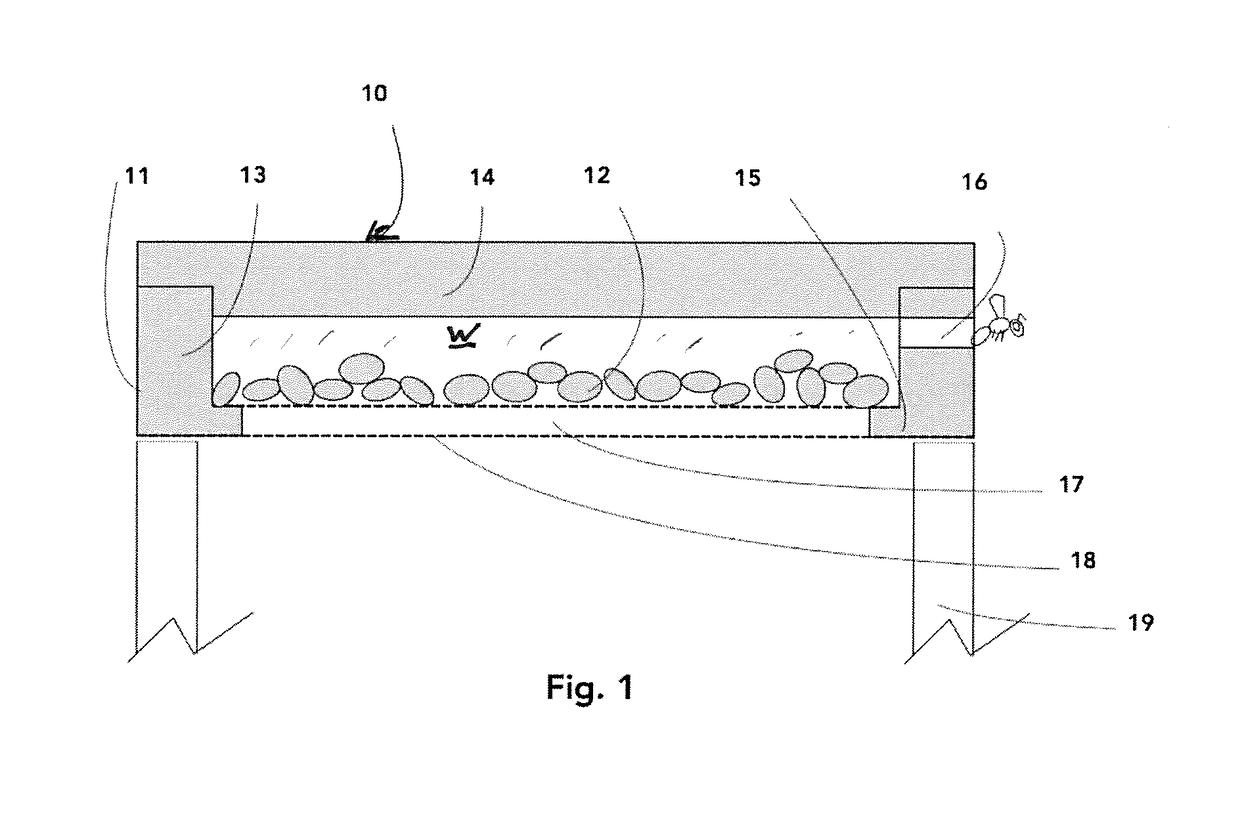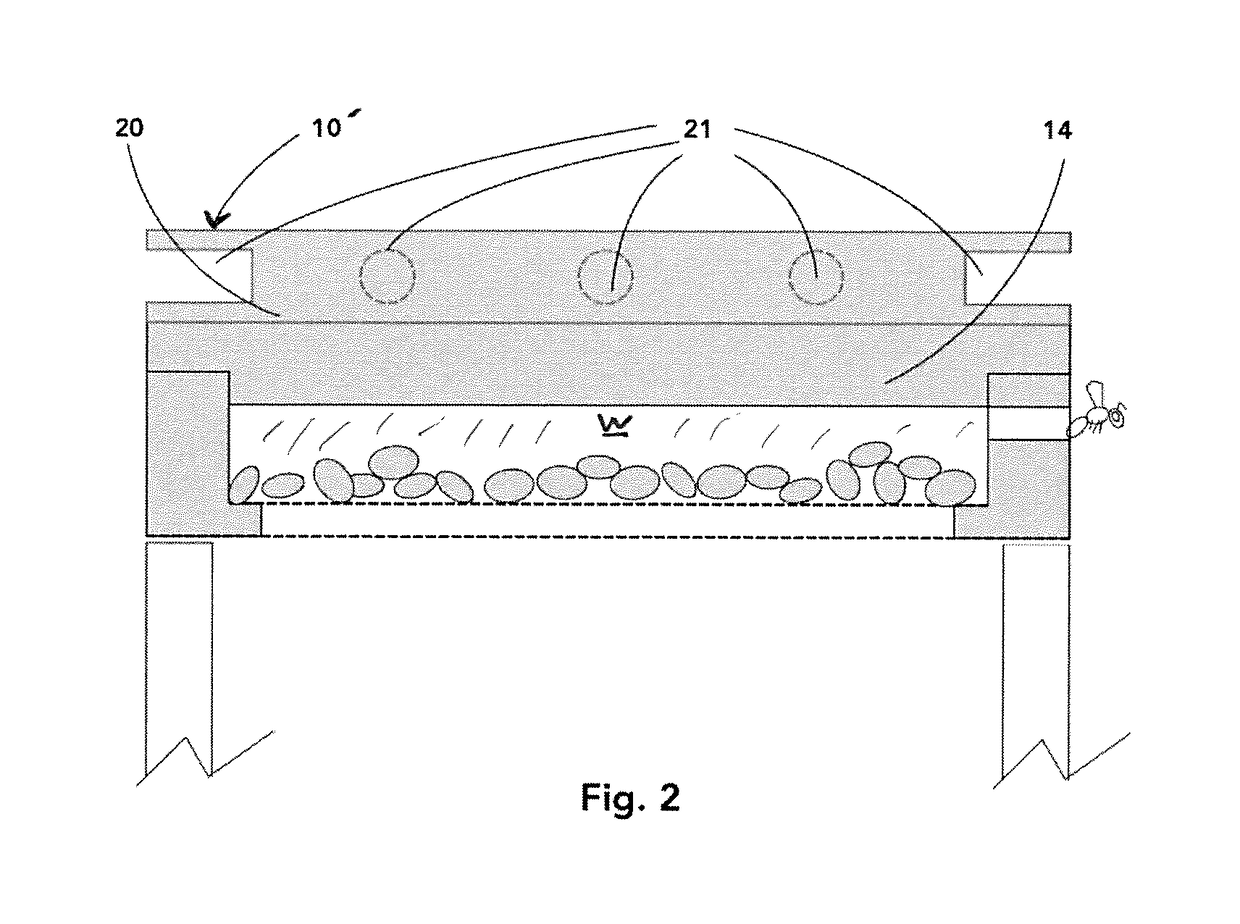Method and apparatus for field incubation of bees
a field incubation and bee technology, applied in the field of field incubation of bees, can solve the problems that the young bee population cannot thrive and develop within a closely limited range, and achieve the effects of efficient transporting, efficient, affective and profitable commercial pollination operation
- Summary
- Abstract
- Description
- Claims
- Application Information
AI Technical Summary
Benefits of technology
Problems solved by technology
Method used
Image
Examples
Embodiment Construction
[0013]The present inventor has conceived a method and apparatus for incubating solitary bees of the genus Osmia or Megachile so that dormant bees are stimulated to emerge in an orchard or field to pollinate a crop in which honeybees are also deployed for pollination purposes. The current invention provides an incubation chamber which is disposed directly over a colony of honeybees in a conventional beehive, in order that the solitary bee cocoons contained in the incubation chamber are warmed by the heat generated by the honeybees, and stimulated to emerge from diapause. The current invention is particularly useful, but not exclusively intended for, commercial pollination of almonds, apples, cherries, pears and other tree fruit, and seed crops.
[0014]Embodiments of the invention comprise an incubation chamber in which cocoons of dormant solitary bees are disposed. Because the incubation chamber will be placed on top of a beehive which is utilized for commercial pollination, and will b...
PUM
 Login to View More
Login to View More Abstract
Description
Claims
Application Information
 Login to View More
Login to View More - R&D
- Intellectual Property
- Life Sciences
- Materials
- Tech Scout
- Unparalleled Data Quality
- Higher Quality Content
- 60% Fewer Hallucinations
Browse by: Latest US Patents, China's latest patents, Technical Efficacy Thesaurus, Application Domain, Technology Topic, Popular Technical Reports.
© 2025 PatSnap. All rights reserved.Legal|Privacy policy|Modern Slavery Act Transparency Statement|Sitemap|About US| Contact US: help@patsnap.com



